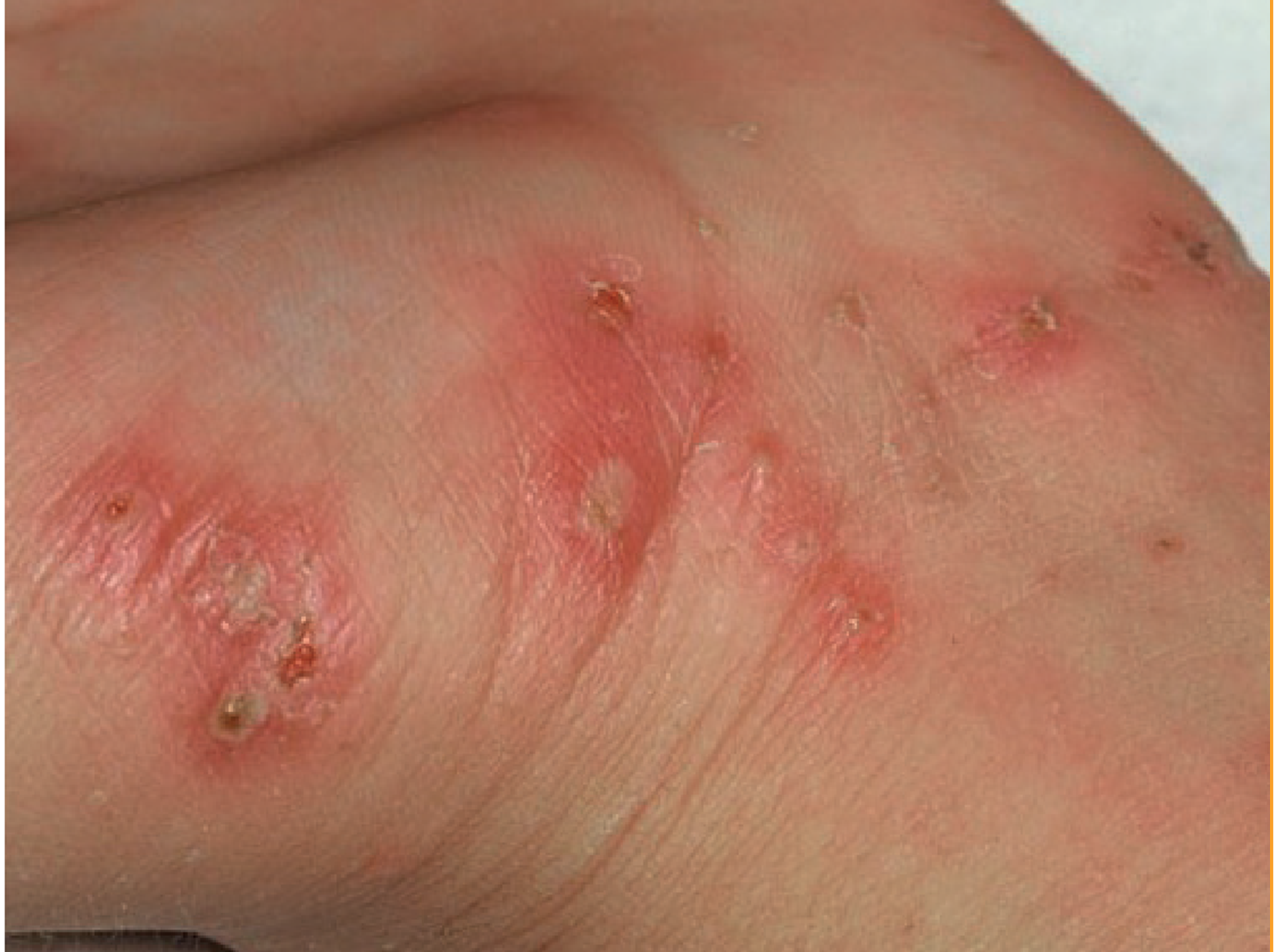Information for patients and visitors
What is scabies?
Scabies is an intensely itchy skin infection, caused by a little mite called Sarcoptes scabiei. Once the mite has established itself in the skin, it starts to reproduce.
The mite burrows into the skin and often goes unnoticed for several weeks.
How can scabies be spread?
- Skin to skin contact for long periods with someone who is infected
- Sexual contact with someone who is infected
- Can also be passed on through sharing of cloths, towels, bedding with someone who is infected.
Scabies is not an infection of neglect; any one can become infected.
Signs and symptoms
The main symptoms are probably caused by an immune response to the mites and their saliva, eggs or faeces. The burrows or rash may be found:
- Around your waist
- Between your fingers
- In your arm pits
- Under your breasts
- Around your breasts/chest
- In your groin
- Around your genital/pubic region
- Around your rectum
- Behind your knees
- Around your ankles and between your toes
- Intense itching – especially at night and over the most of the body
- Sores on the body caused by scratching. These sores can sometimes become infected with bacteria
- It may not always appear in these places at once, but it is alwaysbi-laterally symmetrical
- The rash may be mistaken for dermatological conditions such as eczema.
Will I have to be isolated?
You will be cared for in a side room, because other patients may be susceptible to infection.
Once you have been through your course of treatment you don’t need to stay in your room.
Your visitors do not need to wear an apron or gloves when they come to visit you, it is advisable for them to wash their hands before they leave the room.
What if there are two or more people at the hospice that has similar symptoms?
If there are more than two people at the hospice with classical scabies, this is considered to be an outbreak. One case of crusted scabies is considered an outbreak and Public Health England will be informed.
How is scabies diagnosed?
Diagnosis is usually made by looking at the burrows; rash or scratch marks. It can often be mistaken for eczema so it’s important that the diagnosis is made by the Hospice Medical Team or if at home, your GP. It may be necessary to be seen by a dermatologist. It’s quite difficult to diagnose Scabies because there are usually fewer than 12 mites on the entire body.
What is Crusted Scabies?
Crusted scabies, also known as Norwegian scabies, is a more severe form of scabies where thousands or even millions of scabies mites present in exfoliating scales of skin.
Normal scabies can develop into crusted scabies after a skin reaction. The condition affects all parts of the body, including your head, neck, nails and scalp. However, unlike normal scabies, the rash associated with crusted scabies usually doesn’t itch.
Crusted scabies can affect people with a weakened immune system (the body’s natural defense against infection and illness).
How long can mites live?
When living on a person, an adult female mite can live up to 4 -6 weeks, however; once away from the human body, mites do not survive more than 24 -36hrs.
Can scabies be treated?
Yes, several lotions/creams are available for the treatment of scabies. You must always follow the instructions provided. The following guidelines may help:
- The skin needs to be cool when the lotion is applied, If the skin is warm the mite will burrow deeper and the treatment will be less effective
- Apply the lotion under the nails and around the rectal area
- The lotion/cream should be applied before going to bed and left on for 8 hours and then washed or showered off the next morning
- Machine wash clothes, towels and bedlinen, on the morning after the first application of treatment. Tumble drying and ironing will ensure death to any mite who has survived the laundering process
- All contacts including members from the same household must be treated on the same day as the confirmed case
A second treatment is required for confirmed cases 7 days after the last treatment. Contacts do not need to have a 2nd treatment.
Crusted scabies
Patients with crusted scabies will be treated until there is no longer any evidence of crusted lesions or burrows.

